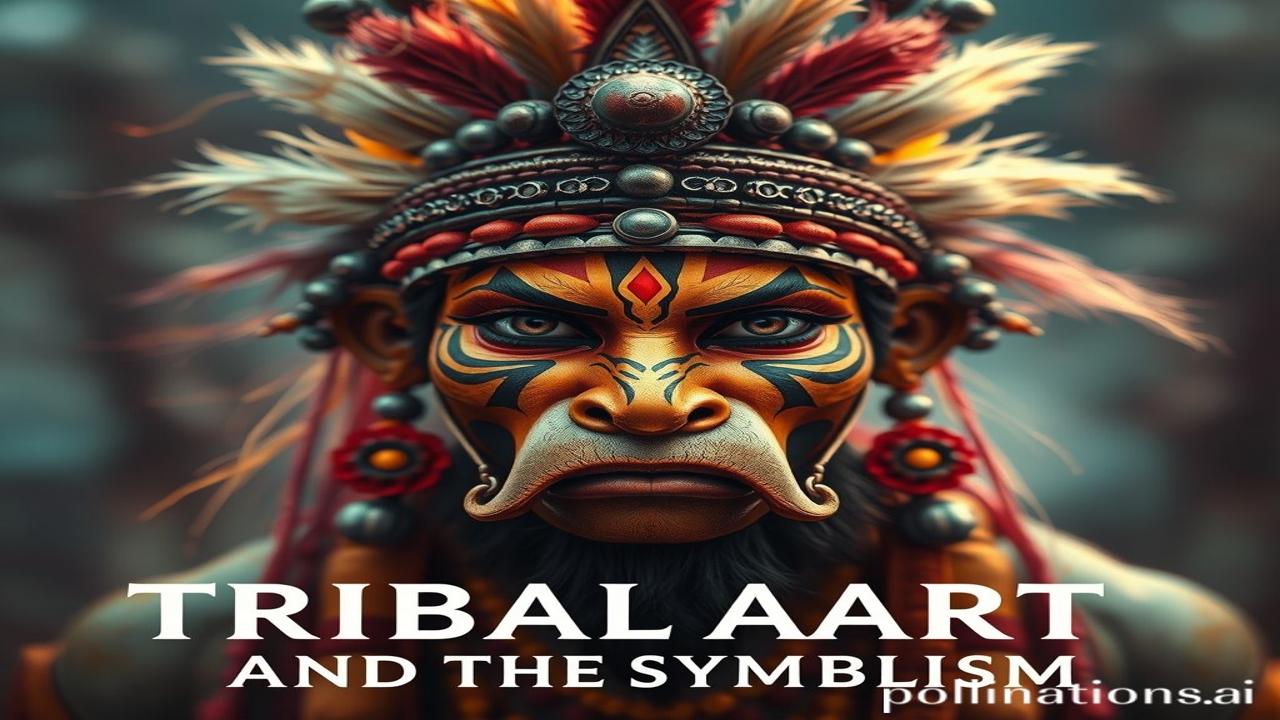Waqt Ki Dhool Mein Rangi, Jivan Ki Kala: Exploring Tribal Art Forms and Their Symbolism
Kabhi socha hai, uss jharno ke kinaare, jahaan sirf jungle ki aawaz hai, vahaan ke pattharon pe kya likha hai? Un pattharon pe jo chitra bane hain, woh sirf rang nahin, woh toh ek kahani hai. Aisi kahani, jo hamari jadon se judi hai – tribal art forms ki kahani!
Tribal Art: Kya Hai Yeh Jadui Kala?
Tribal art, dosto, sirf painting ya sculpture nahin hai. Yeh toh ek jeevan shaili hai, ek dharohar hai, jo pidhiyon se chali aa rahi hai. It’s the artistic expression of tribal communities across India, each with its own unique style, motifs, and symbolism. Soch lo, from the intricate Warli paintings of Maharashtra to the vibrant Pithora art of Gujarat, yeh sabhi hamari sanskriti ke anmol ratan hain. These art forms often depict their beliefs, myths, rituals, and everyday life.
History Ka Ek Safar: When, Where, and Why?
These art forms are ancient! Many can be traced back centuries, even millennia. Imagine, the rock paintings of Bhimbetka in Madhya Pradesh are some of the oldest examples of human art in India, dating back to the Paleolithic era. Yeh art forms mainly develop in tribal communities living in remote areas of India. They are found in states like Maharashtra, Gujarat, Madhya Pradesh, Odisha, Jharkhand, West Bengal, and the North-Eastern states.
But why are they important? Because they are a window into the history, culture, and worldview of these communities. Yeh sirf decoration nahin hai; they are a form of communication, storytelling, and preserving their identity. Yeh art unki shakti hai.
Zameeni Sach: Logon Ki Zindagi Ke Rang
Picture this: Ma Jumni, a Warli woman in Maharashtra, is carefully painting a scene of daily life on the mud walls of her home. Her fingers dance across the surface, creating geometric shapes that represent people, animals, trees, and the sun. Her daughters watch her, learning the secrets of their ancestors.
“Dekho, beti,” she says, “this circle is the sun, the giver of life. And these triangles, they are the mountains that protect us.”
In Odisha, a Kondh artist is meticulously carving a wooden idol of their deity, Dharni Penu. He works with reverence, knowing that the idol will be used in a sacred ritual to ensure a good harvest.
“This is not just wood,” he murmurs to himself. “This is Dharni Penu, the goddess of the earth, who sustains us.”
In the northeast, a Naga artisan weaves intricate patterns into a shawl, each design telling a story of bravery, honor, and community. The colors are vibrant, reflecting the lush forests and the vibrant spirit of the people.
Yeh sabhi log, farmers, artisans, dancers – they all pour their soul into their art. Their dreams, fears, and joys are all reflected in their creations. Their kala is their jeevan.
Dharohar Aur Pehchan: Aaj Ki Bharat Mein
Even today, tribal art forms continue to thrive in India. We see them in our handicrafts, textiles, and even contemporary art. They are a source of inspiration for designers and artists alike. Many organisations are working to preserve and promote tribal art, recognising its cultural and economic value.
But it’s not enough to simply admire these art forms. We must also understand the stories they tell, the values they represent, and the people who create them. Tribal art is an integral part of Bharatiyata, of our Indian identity.
Fun Fact Alert!
Log samajhte hain ki tribal art sirf “primitive” hai, lekin asli sach yeh hai ki yeh art forms complex and sophisticated systems of symbolism and meaning. The geometric patterns, the colours, the motifs – they all have a specific purpose and meaning, passed down through generations.
Visuals and Emotions: Ek Ehsaas
Imagine the earthy smell of the mud walls in a Warli village, the rhythmic beat of the drums during a Kondh festival, the vibrant colours of a Naga shawl against the backdrop of the misty mountains. The sounds of the jungle, the feel of the cool earth under your feet, the taste of the wild berries – it’s all part of the tribal experience.
Antim Vichar: Ek Dil Se
Tribal art is more than just decoration; it’s a reflection of our shared humanity. It’s a reminder that even in the face of modernisation, we must never forget our roots, our traditions, and the wisdom of our ancestors.
“कला एक दर्पण है जिसमें हर कोई अपनी छवि देखता है।” (Art is a mirror in which everyone sees their own image.)
Let us celebrate the beauty and diversity of tribal art forms, and let us work to ensure that they continue to thrive for generations to come.
